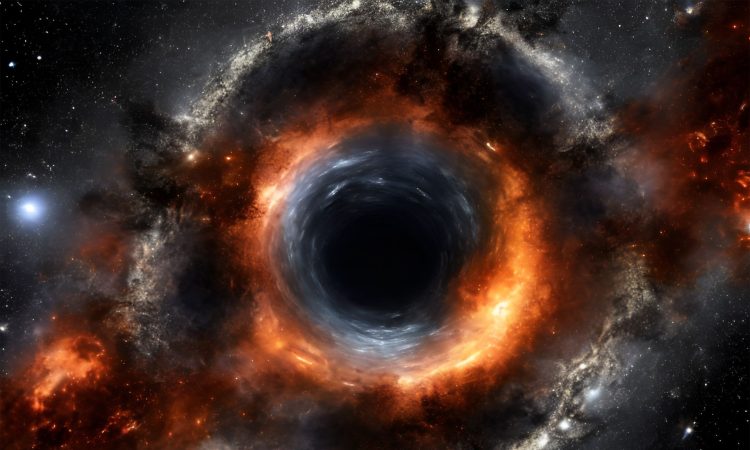
Dark matter is the invisible force that holds the Universe together – or so we think. It makes up about 85% of all matter and about 27% of the contents of the Universe, but since we can’t see it directly, we have to study its gravitational effects on galaxies and other cosmic structures. Despite decades of research, the true nature of dark matter remains one of science’s most elusive questions.
According to a leading theory, dark matter could be a type of particle that barely interacts with anything except gravity.
But some scientists believe that these particles might occasionally interact with each other, a phenomenon known as self-interaction. Detecting such interactions would provide crucial clues about the properties
However, distinguishing the subtle signatures of dark matter self-interactions from other cosmic effects, such as those caused by active galactic nuclei (AGN) – the supermassive black holes at the center of galaxies – has been a major challenge.
AGN feedback can push matter in ways similar to , making it difficult to distinguish between the two.
The invisible force that holds the Universe together
In a significant step forward, astronomer David Harvey from EPFL’s Astrophysics Laboratory has developed a deep learning algorithm that can unravel these complex signals.
Their method is designed to differentiate between the effects of dark matter self-interactions and those of AGN feedback by analyzing images of galaxy clusters – vast collections of galaxies bound together by gravity. The innovation promises to greatly increase the precision of dark matter studies.
Harvey trained a convolutional neural network (CNN) – a type of artificial intelligence that is particularly good at recognizing patterns in images – with images from the BAHAMAS-SIDM project, which models galaxy clusters under different scenarios of dark matter and AGN feedback.
By being fed thousands of simulated images of galaxy clusters, the CNN learned to distinguish between signals caused by dark matter self-interactions and those caused by AGN reactions.
Inception achieved impressive accuracy
Of the various CNN architectures tested, the most complex—dubbed “Inception”—proved to be the most accurate as well. The AI was trained on two main dark matter scenarios, which exhibit different levels of self-interaction, and validated on additional models, including a more complex, velocity-dependent dark matter model.
Inception achieved an impressive 80% accuracy under ideal conditions, effectively identifying whether galaxy clusters were influenced by interacting dark matter alone or by AGN feedback. Inception maintained its high performance even when the researchers introduced realistic observational noise that mimics the kind of data we expect from future telescopes like Euclid, he writes.
This means that Inception – and the AI approach in general – could prove incredibly useful for analyzing the massive amounts of data we collect from space. Furthermore, the ability to handle unseen data indicates that it is adaptable and reliable, making it a promising tool for future dark matter research.

